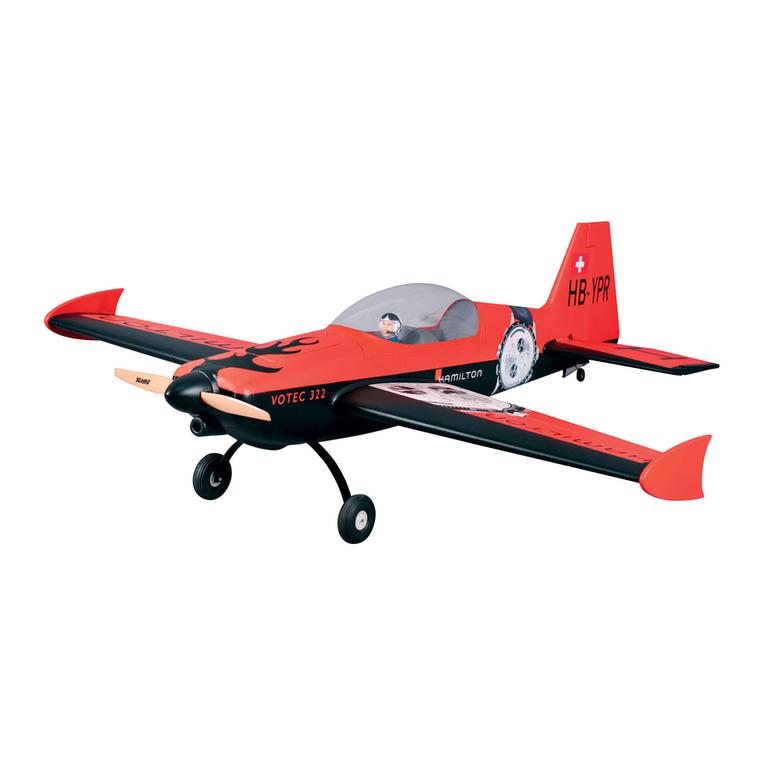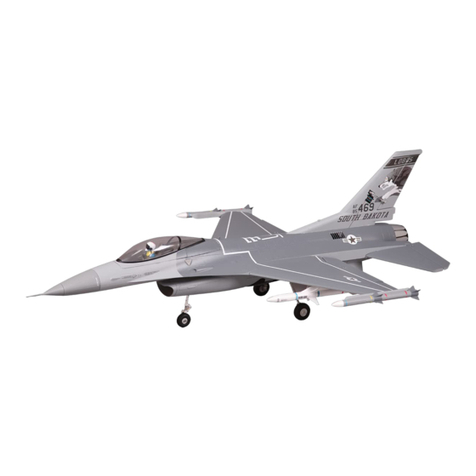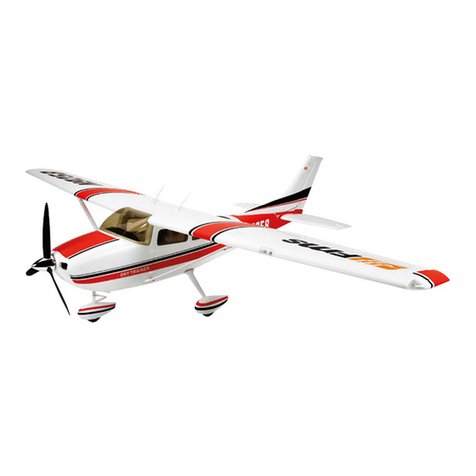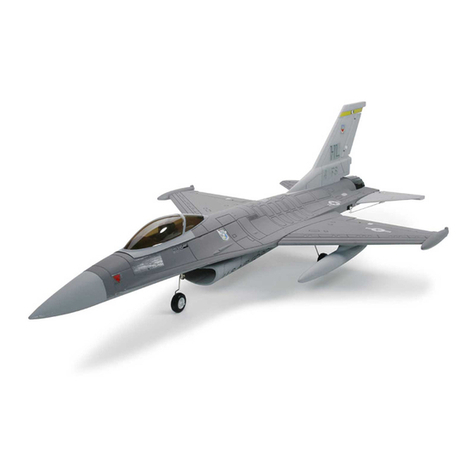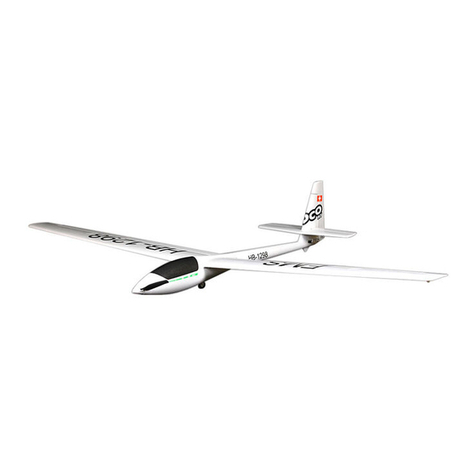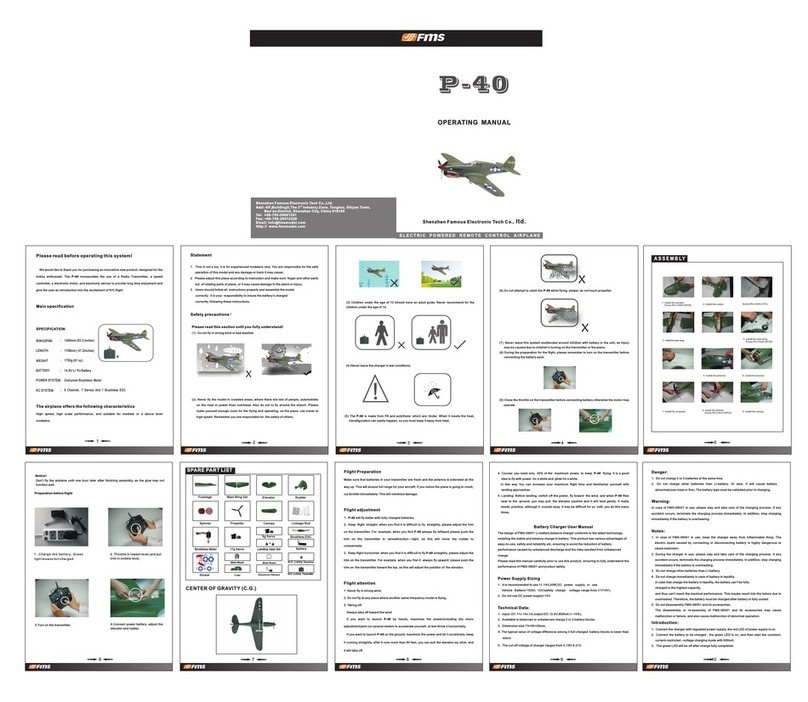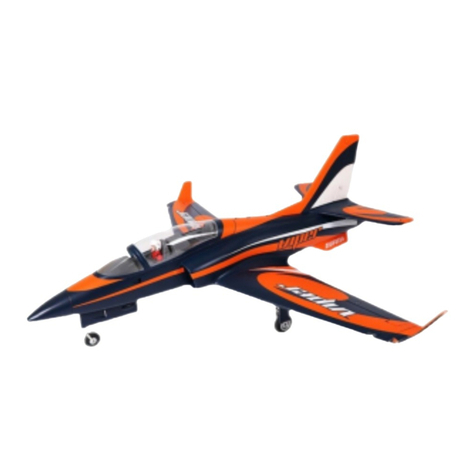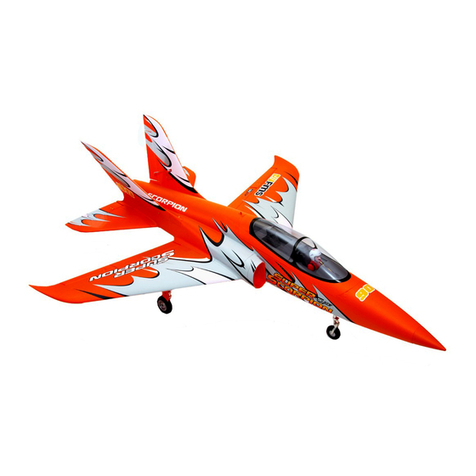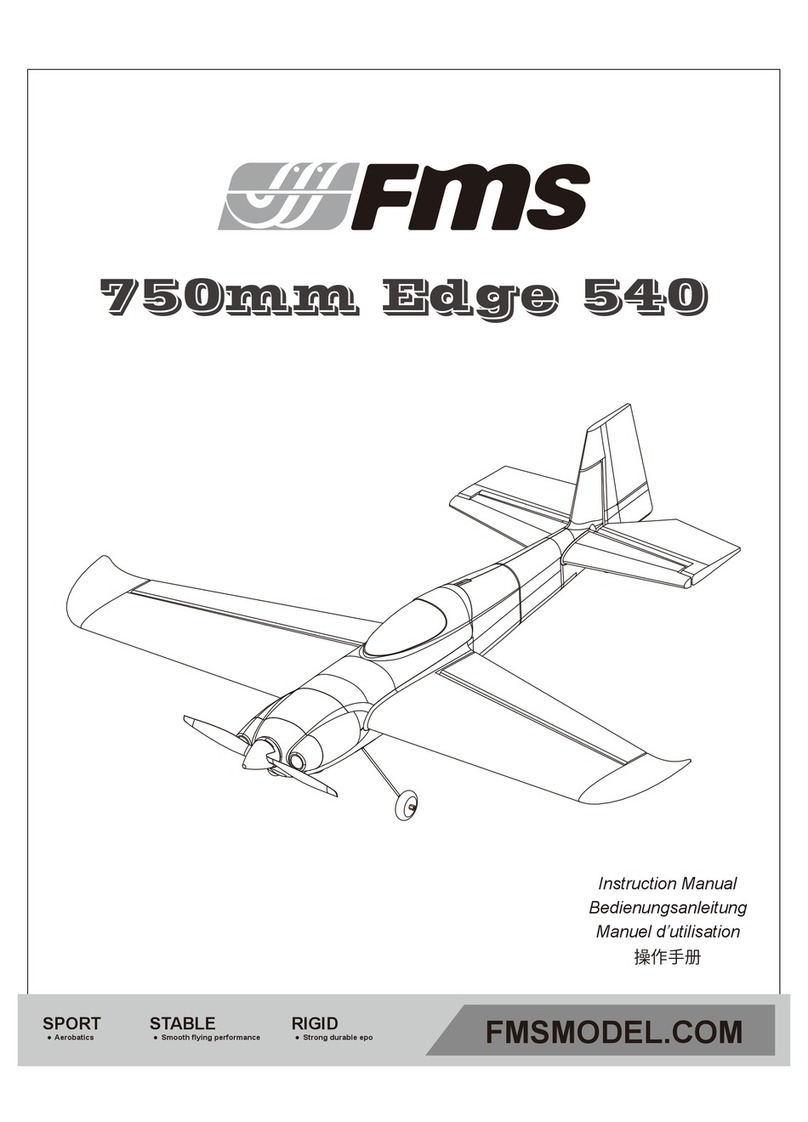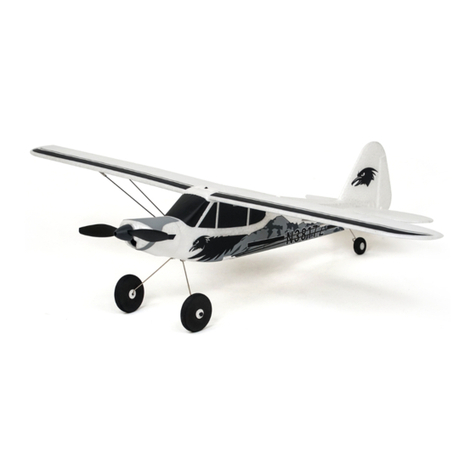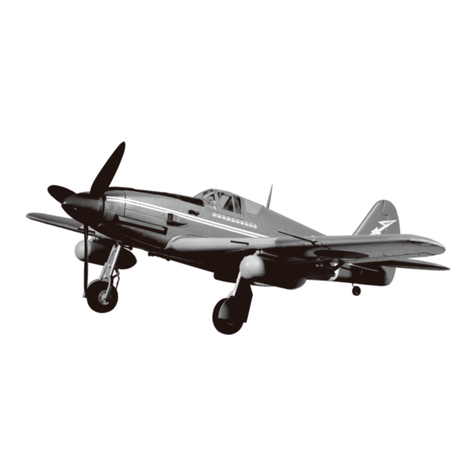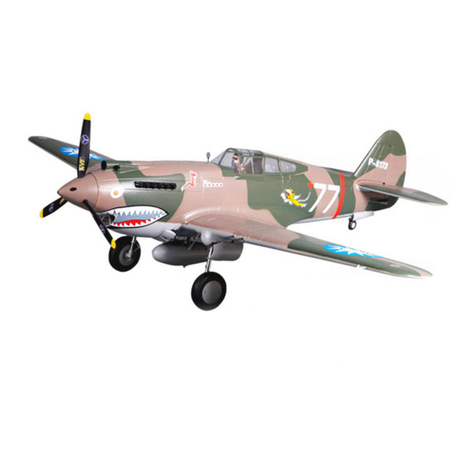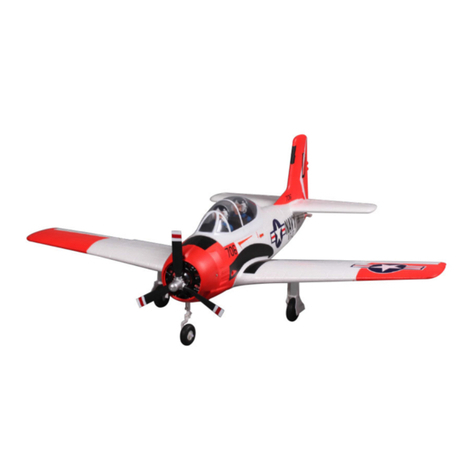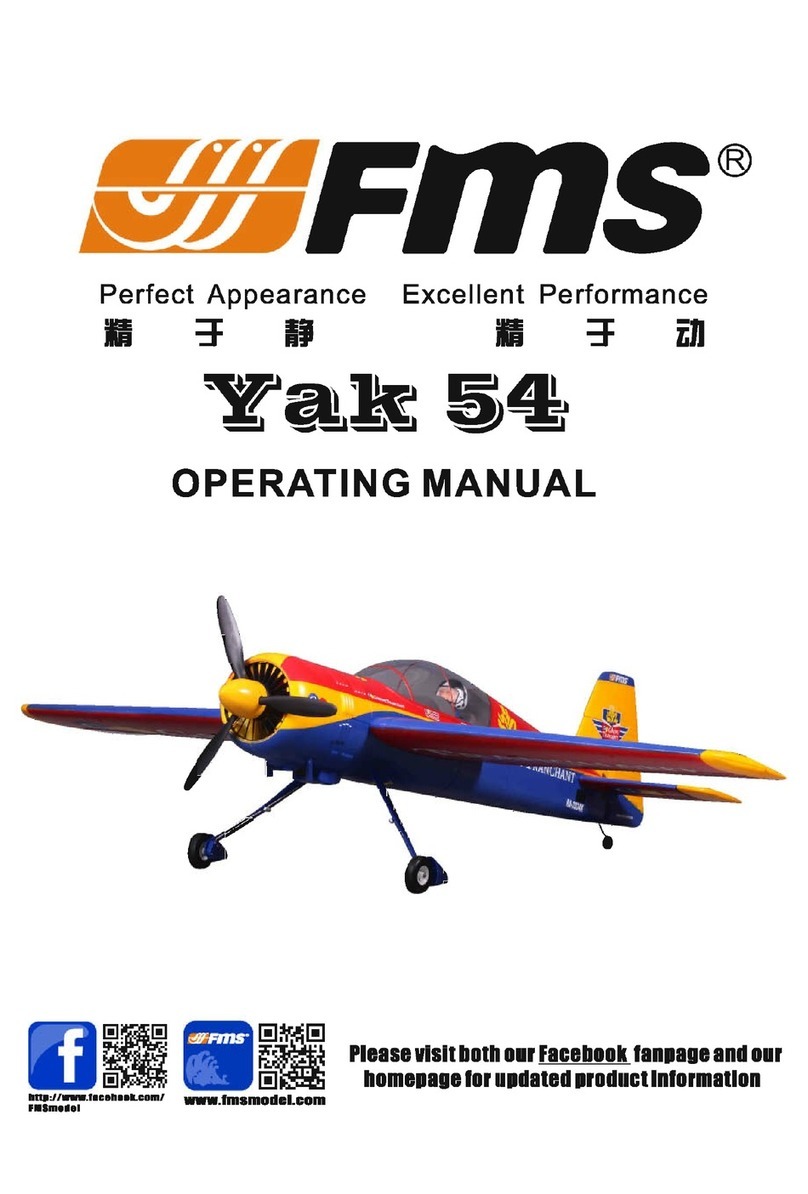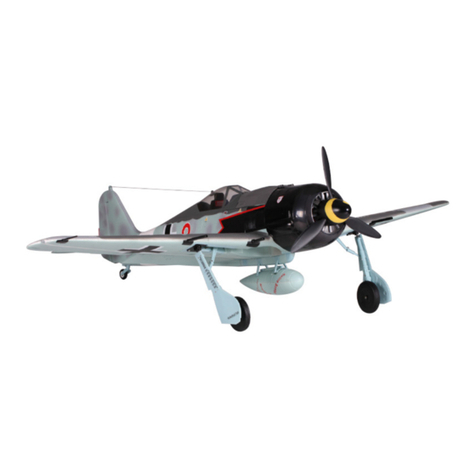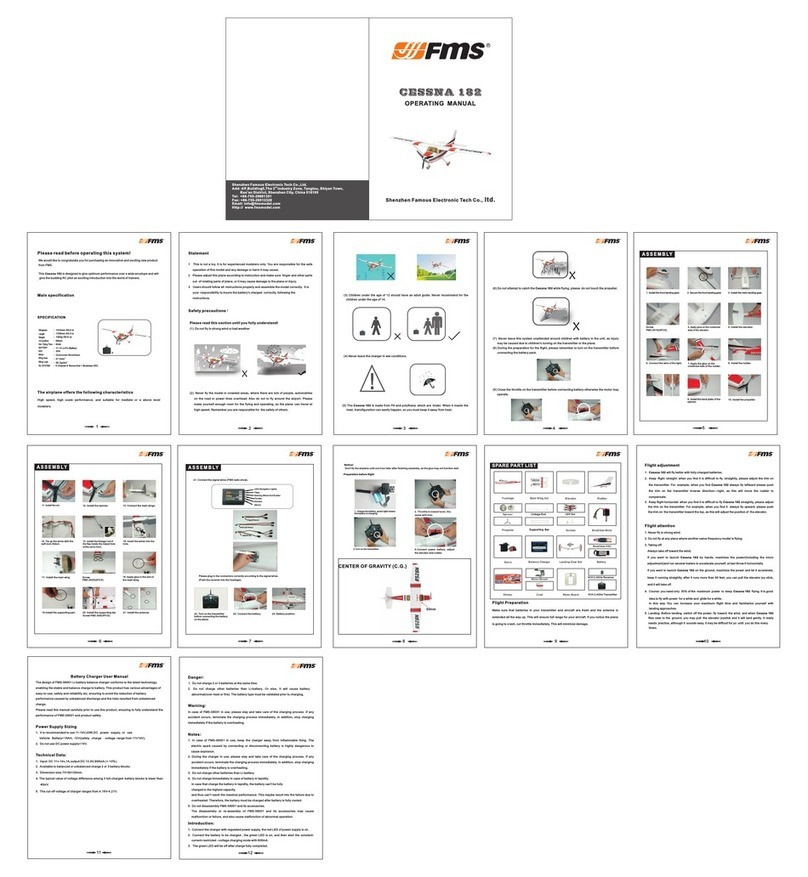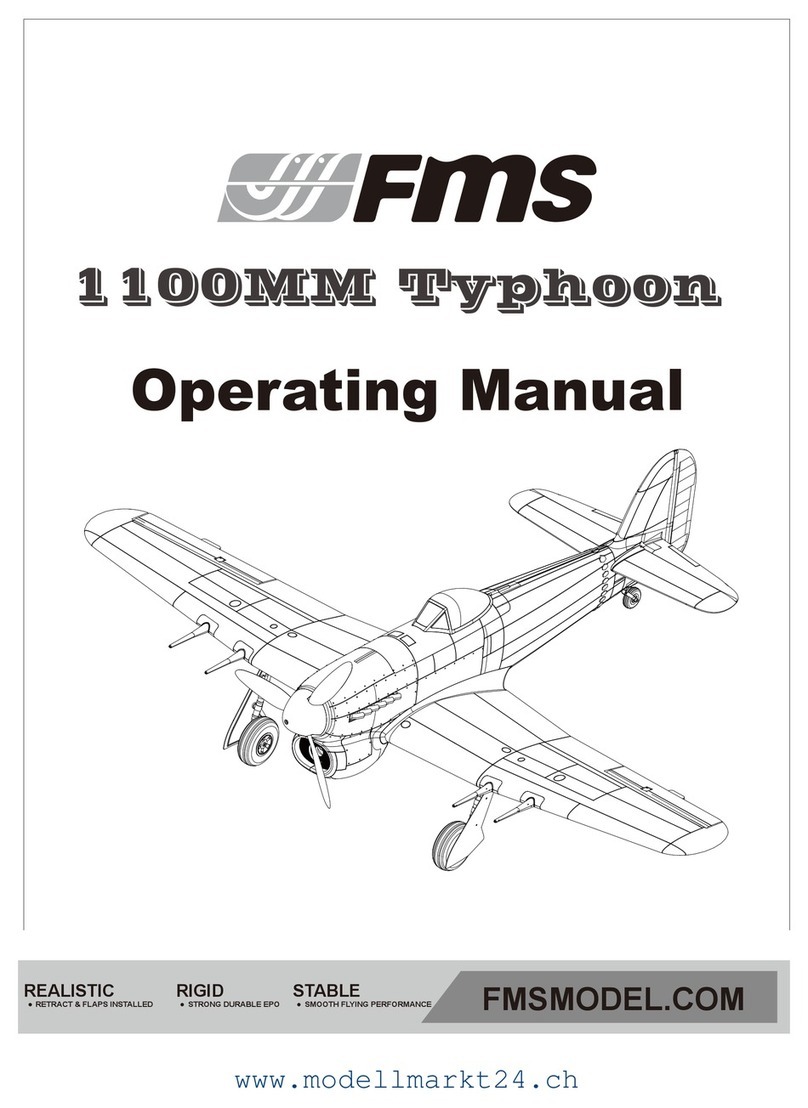
3
Before assembly, please inspect the contents of the kit. The
photo below details the contents of the kit with labels. If any
parts are missing or defective, please identify the name or
part number (refer to the spare parts list near the end of the
manual) then contact your local shop or email us: support
Kitcontents
Introduction
Kit contents
Model assembly
Battery installation
Receiver diagram
Get your model ready to fly
Clevis installation
Control horn and servo arm settings
Center of gravity(CG)
Before flying the model
Flying course
Troubleshooting
Spare parts list content
User Manual of Brushless Speed Controller
3
3
4
8
8
8
10
10
10
11
11
12
12
13
..............................................................
..............................................................
........................................................
.....................................................
......................................................
.........................................
......................................................
..............................
.................................................
...............................................
............................................................
........................................................
...............................................
....................
Tableofcontents
Introduction
Wingspan: 1700mm / 66.9 in
Overall Length: 1360mm / 53.5in
Flying Weight: ~5300g
Motor Size: 5060-KV300
Wing Load: 97.8g / dm² (0.22oz/in²)
Wing Area: 54.2dm²(840.1 sq.in)
ESC: 80A
Servo: 17g plastic*8pcs, 17g metal*2pcs,
9g plastic*2pcs
Recommended Battery: 22.2V 5000-6000mAh 45C
Specifications
EN
@fmsmodel.com.
The inverted gull-wings of the Vought F4U Corsair is one of the
most identifiable icons of the Second world war and Korean
war. Known for its blistering speeds, high climb rate, survivabil-
ity and firepower, the Corsair achieved an amazing 11:1
kill:loss ratio against Japanese fighters in the Pacific theater.
FMS is proud to introduce the all-new 1700mm F4U V3.
Powered by a 6S power system, Hobbywing 80A ESC, 5060
motor and a 11x18 four bladed prop, the F4U V3 has an
extremely wide flight-envelope: adrenaline-pumping speeds
and deceivingly trainer-like slow speed performance; making
the Corsair one of the easiest flying warbirds on the market
today.
Committed to creating the most visually realistic aircraft on the
market, FMS has added numerous scale features onto the
1700mm F4U V3.
Pitot tubes, missile racks, auxiliary fuel tank, aerials, exhausts,
realistic tail gear, pilot figure etc. allow the aircraft to look stati-
cally realistic.
Rotating electric retracts, 3 position flaps, navigation and land-
ing lights, slow retracting gear bay doors add to the dynamic
realism of the aircraft.
Operating out of an unpaved airstrip? The shock-absorbing
metal retracts with bearing-equipped wheels not only look
great, they greatly reduce airframe stress during ground opera-
tions.
The screw-together assembly and plug type wing connectors
make the assembly process a breeze.
Turn heads at the field with the 1700mm F4U V3- a must have
for every warbird fan.
Features:
• Upgraded 5060 brushless motor with high-performance
Hobbywing 80A ESC
• Upgraded 18x11 four-bladed scale propeller
• Upgraded CNC metal, electric, shock-absorbing retracts
• Removable vertical stabilizer for easy transportation
• Upgraded large battery compartment with a latch-type
canopy
• Improved hinge design
• Extremely detailed airframe
• Bearing-equipped durable wheels
• Screw-together assembly with plug connectors
• Preinstalled ball-link pushrods
A
D
EFG
I
H
JK
BC
A:
B:
C:
D:
E:
Fuselage
Rudder
Wing joiner
Wing alignment
plates
Main wing
F:
G:
H:
I:
J:
Horizontal stabilizer
Rocker rack
Pitot tube
Pushrod
Propeller assembly
K: Screw set
(HKM50x60*4
HKM3.0x26*7
HKM3.0x20*4)

